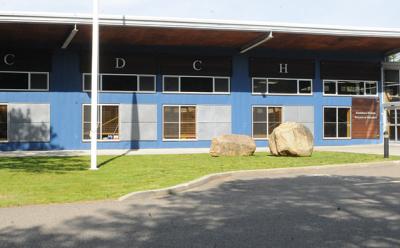Money Woes, Fewer Students Shutter School

Citing financial constraints and continued declining enrollment, the Child Development Center of the Hamptons, the South Fork’s only charter school, formally announced on Tuesday that it will close at the end of the school year.
According to representatives of the school, which educates children in both regular education and special education programs, the staff is working to place its 54 students in kindergarten through fifth grade and 31 prekindergartners into other programs, whether in traditional public schools or other special education settings.
When asked for specifics about what went wrong, the fate of the C.D.C.H. building in Wainscott, and how many teachers and staff members would be losing their jobs, Andy Robles, a spokesman for the school, said yesterday that no further comment from the school would be given.
Late last week, C.D.C.H. began notifying individual school districts, including Springs and East Hampton, that the school would close. The impact of the closure will vary greatly across the South Fork. For instance, in East Hampton, Richard Burns, the superintendent, on Monday said the district will be able to easily absorb the district’s 13 children at C.D.C.H. back into its classrooms. The approximately $400,000 the district had budgeted for C.D.C.H. tuition will be reallocated to support other programs and services in East Hampton.
But the situation becomes more problematic in Springs, which had 26 children in kindergarten through fifth grade and another four children in prekindergarten at C.D.C.H. Space is already tight in the school, which now anticipates bringing the majority of those children back into its classrooms. During Monday’s school board meeting, Liz Mendelman, the school board president, said the district expects to need one more section of third grade next year due to this year’s burgeoning second-grade enrollment. Since the school has already run out of space for elementary classrooms, the district is considering converting the middle school computer lab into a regular classroom. Carl Fraser, the Springs business official, said the $724,760 that Springs had budgeted for C.D.C.H. tuition could then be used to hire a new teacher, outfit the new classroom, and cover other school functions related to the additional students.
In a statement on Tuesday, Gerard Cairns, C.D.C.H.’s interim school leader, thanked “everyone who helped make C.D.C.H. a wonderful place to learn for the last two decades.” He named the board, the teachers, the Charter School Institute, “the community for embracing our mission, and, most important, the families for trusting us with their children.”
Mr. Cairns is the vice president of education and youth services for Family Residences and Essential Enterprises (FREE), the nonprofit organization that manages the school. Reached by phone Tuesday, he declined to comment other than to say, “We’re really right now focusing on children, parents, and teachers.”
C.D.C.H.’s announcement followed a statement released Monday by the Gersh Academy, which had been in talks to take over management of the school, that it would no longer do so.
“After extensive review and having identified a number of factors beyond our control, all parties involved mutually agreed not to proceed with the transfer of management,” the statement read. “We, like many parents, are tremendously disappointed in this outcome and assure the public that best efforts were made in our attempt to successfully complete this endeavor.”
Word of the takeover by Kevin Gersh, the owner and operator of the Gersh Academy schools, a group of private schools and programs for children and young adults with autism, came to light in February. At that point, Mr. Cairns said FREE had helped C.D.C.H. stabilize its finances. But the damage had already been done. According to C.D.C.H.’s February 2015 board meeting minutes, the school reported losses of at least $350,000 between July and December 2014. “The school is experiencing financial difficulty due to the lower number of special needs children in attendance,” the minutes read. “Cash flow is also a problem, as expenses exceed revenue.”
The former head of C.D.C.H., Patricia Loewe, who had been with the school since the fall of 2012, lost her job in August 2015 because of the school’s finances.
C.D.C.H. officially opened as a charter school in 2001 after beginning in the mid-1990s as a program for a small group of toddlers in the house of a local parent, Dawn Zimmerman Hummel. It draws students from local school districts, with those districts paying tuition. Students may come from within 15 miles for the regular education program and 50 miles for the special education program. In November 2013, C.D.C.H. had 80 students in kindergarten through fifth grade. At its peak, it had 95.
Tuition for the school varies based on the per-pupil cost of education in a student’s home school; for instance, tuition for general education students would be $25,075 for a Sag Harbor student, $21,775 for Springs, or $57,998 for Amagansett.
Mr. Burns said that because charter school tuition costs can be burdensome to individual districts, many of them “have been really working hard to create and develop programs within district for children who would have opted to go to charter schools.”
The SUNY Charter School Institute found C.D.C.H. to be in good academic standing during the 2014-15 school year as it had in several prior years. In February 2015, the institute recommended a five-year renewal of C.D.C.H.’s charter.
The Charter School Institute was in the process of reviewing the Gersh Academy’s takeover of C.D.C.H. when the school’s closure was announced.
